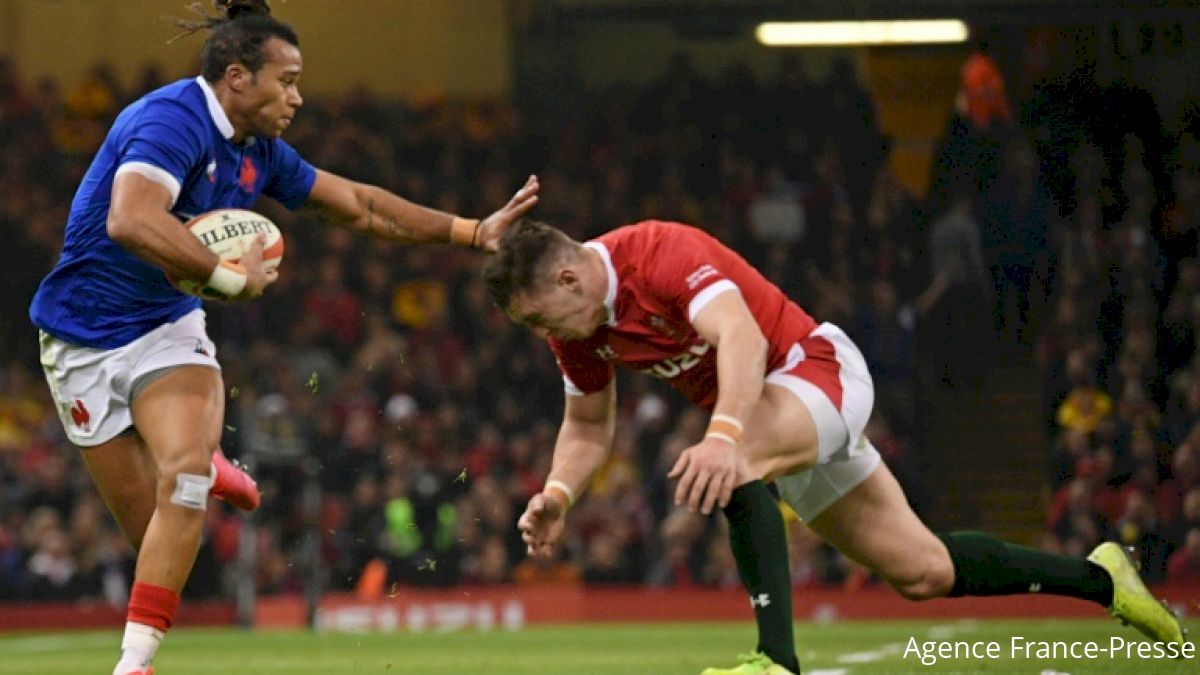Rugby Rules 101: Field Size, Scoring, & Time Keeping
Rugby Rules 101: Field Size, Scoring, & Time Keeping
How long is a rugby match? How big is a rugby field? How do you score in rugby? We're here to answer these fundamental questions with Rugby Rules 101!

So you may have heard of rugby, seen it on TV once or twice, or maybe seen some folks playing at a local field or park, but you really have no idea how it's played or what any of the rules are.
While at first glance it appears to be a chaotic cluster of wild, screaming bodies, it is in fact a fairly simple and very beautiful game. In fact, some reckon it's the game they play in heaven! Anyhow, for those new to the sport or unfamiliar with how it's played, we're here to give a brief, simplistic rundown on the basic tenants of the sport.
To begin with we'll go over the dimensions of the playing field, the ways you can score points, and the duration of a rugby match.
Shall we get started? Here goes:
What does a rugby field look like?
Rugby is a game played by 15 players on each team, meaning it needs a big field! A rugby field can vary in size, but for the most part it looks much like a football field: rectangular in shape, with two end-zones and two sets of goal posts at either end of the pitch -- the posts, however, are placed at the front of the end-zone instead of the back.

Another thing that differentiates a rugby field from a football field is that each rugby pitch can be different in width and length. Whereas a football field will always be 100 yards X 53 1/3 yards with 10 yard long end-zones, a rugby field can be 94-100 meters long X 68-70 meters wide, with end-zones ranging from 6 meters to 22 meters long.
How does the scoring work?
In rugby, there are three ways in which you can score. First and foremost is what is known as a "try". A try occurs when a player from the attacking team crosses into the opponents end-zone and touches the ball down to the ground. Yes, it is literally a "touchdown". This is worth five points.
Following the try, the team who scored has the opportunity to score an additional two points by scoring what is called a "conversion". This is a kick for the posts that is taken in a direct line back from where the try was scored. So for instance, if you scored the try one meter away from the sideline, the kick can be taken anywhere on the field one meter from that sideline. If you scored 15 meters from the sideline, the kick must be taken 15 meters from the sideline. Watch here as South Africa scores a try and then kicks the ensuing conversion.
A second way to score in rugby is by making a "penalty kick". Like a conversion, a penalty kick is an attempt to kick for the posts. However, a penalty kick is worth three points and is taken at or in a direct line backwards from the spot that a penalty is awarded. This occurs when the referee penalizes a team for a rules infraction. Here is an example of a penalty kick:
The third and final way of scoring in rugby is by making what is called a "drop goal". A drop goal can occur at any point in the run of play and is worth three points. It is when a player drops the ball to the ground and, after it touches the ground, he/she kicks it through the uprights. Here is a look at a some of the best drop goals ever:
How long is a game?
Rugby is an 80 minute game, divided into two 40 minute halves. The clock runs continuously, as it does in soccer, save for when there is a stoppage for an injury or for instant replay. Therefore, when the ball goes out of bounds, or when someone scores, the clock continues to run.
However, there is one caveat to the length of a game. In theory, a rugby half could go on infinitely. How is that? Unlike other sports where the game ends as soon as the clock hits zero, rugby halves do not end until there is a stoppage in play once the time on the clock is out.
So hypothetically the time on the clock at the end of a half could hit zero, but the team with the ball may still have possession. Until they kick the ball out of play, score, or commit an infraction, they can continue to play for as long as they keep the ball.
Watch in this clip here, as New Zealand plays Ireland in a close game. Down by five points at the end of the match, New Zealand continues to play nearly two minutes after the 80 minutes are up.